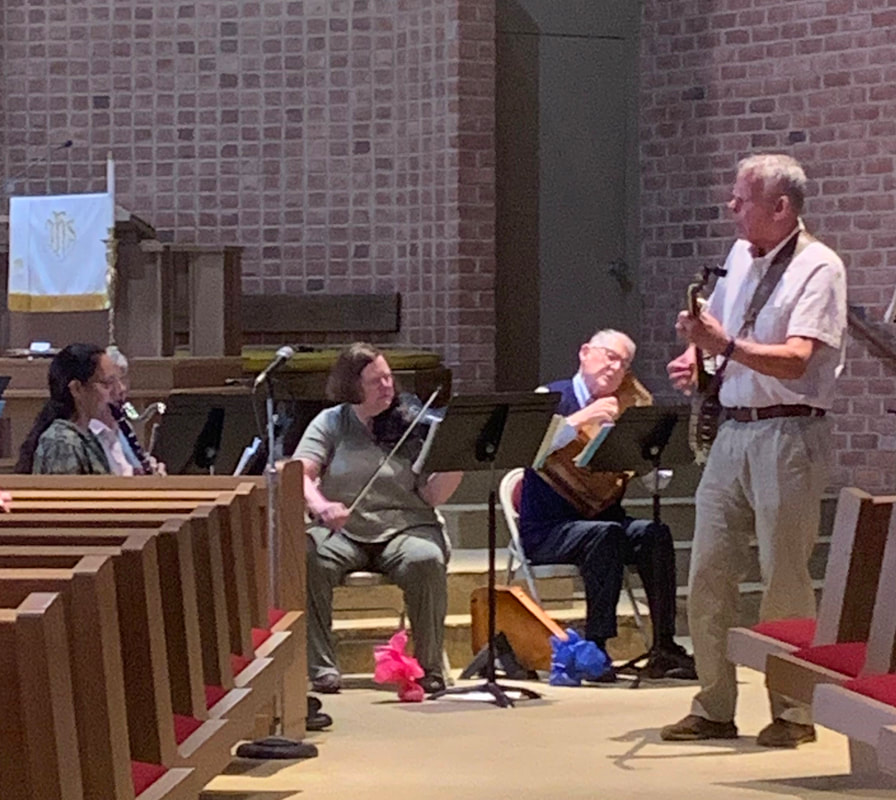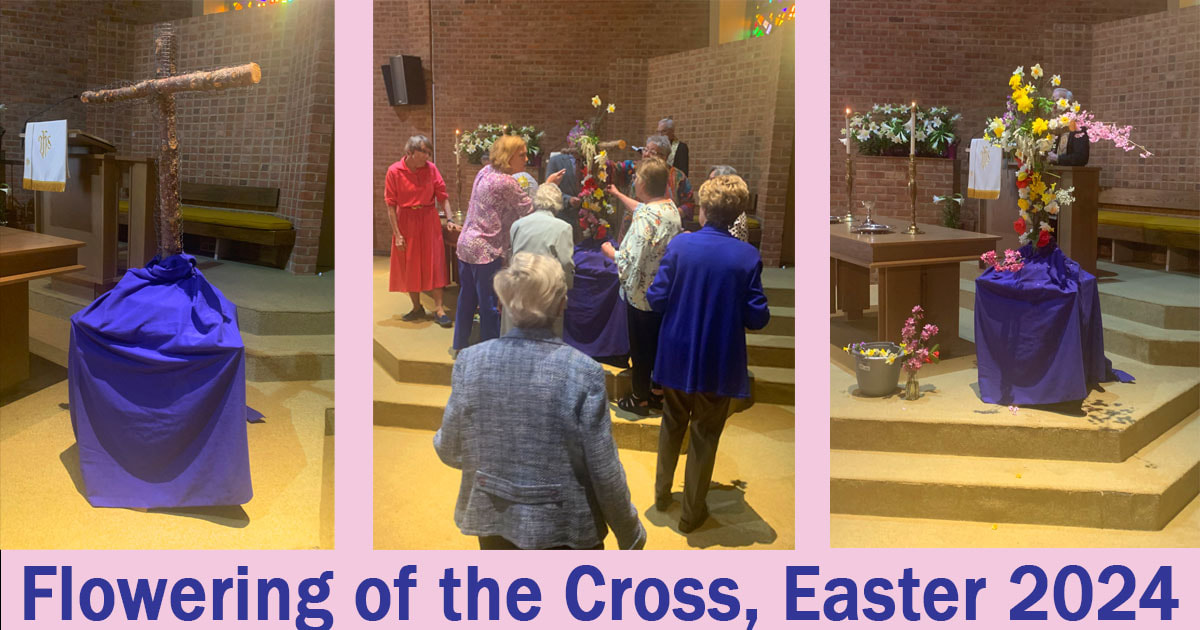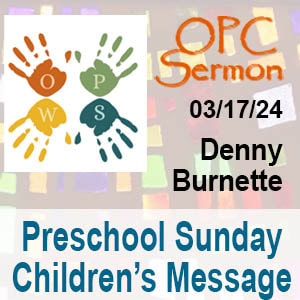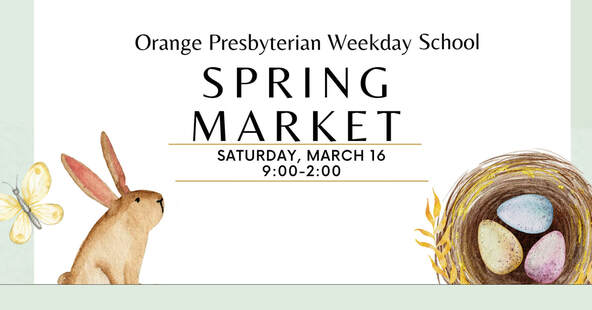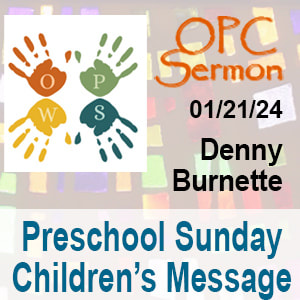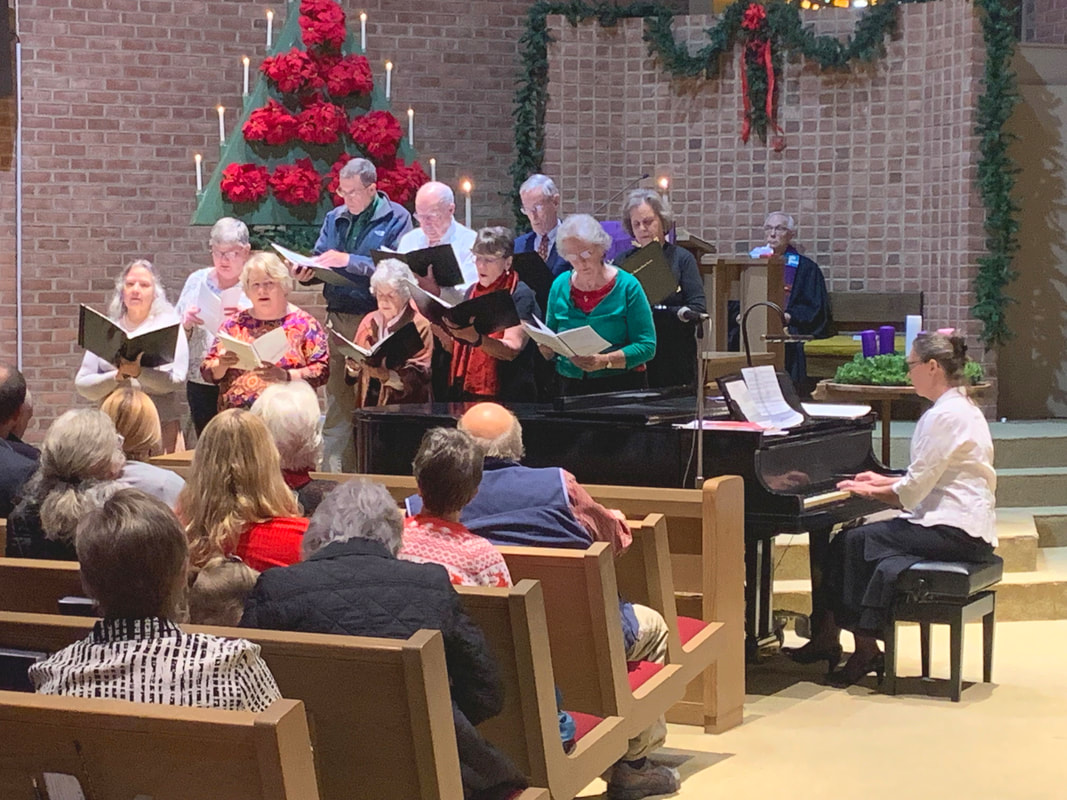 Lyle Sanford Lyle Sanford This past Sunday OPC was treated to some high-energy music during worship. Lyle Sanford's Fun Band was in the house! The Fun Band is an important part of musical life here in Orange, Virginia. Its founder and leader is Lyle Sanford, a music therapist. The concept of the group is simple. Whoever shows up, plays. Sanford's created a library of arrangements that can accommodate virtually any combination of instruments. This past Sunday the combination was banjo, autoharp, flute, bass clarinet, fiddle, and trombone. This all-volunteer group frequently provides plays for worship services, as they did this past Sunday. Several of the churches in town are looking forward to their next visit from the Fun Band. For churches, Sanford performs what he calls "the good ol' hymns." Many of these date from the turn of the 20th Century and are common to many denominations. The Fun Band's set list for this past Sunday:
As always, the Fun Band delivered. Thanks to Lyle Sanford and his volunteer musicians for making worship, well, fun! Below is a sampling of the Fun Band from the Sunday Service.
1 Comment
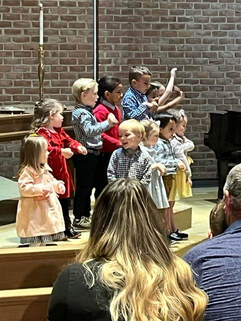 This past Sunday was the last Preschool Sunday of the school year. On the third Sunday of the month, the staff, students and parents of Orange Presbyterian Weekday School (OPWS) joined us in worship. OPWS is a vital church ministry we offer to the community. So making a strong connection between worship and learning is important. This Sunday the children sang, making this a truly special service. You can listen to the OPWS children's choir singing by opening the link below. 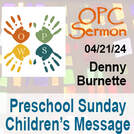 Denny Burnette also offered a special message for the children, concluding with an invitation to return any time. It's an invitation that's also open to their parents and families. You can hear Denny's message by opening the link below. It was a very special service. And the fellowship time afterward even more so. Seventy nine people worshipped together that Sunday, and spent time together following the service. As you can see from the photos, it was a unique experience, not to be repeated. At least, until the fall, when the next scholastic year begins. And Preschool Sundays return to OPC. The OPC Easter tradition continues. Yesterday, during the first hymn of the Easter worship service, people came to the front of the sanctuary. An ugly, wooden cross was their destination.
The cross, covered in chicken wire. represented was a symbol of Jesus' death. The congregants covered the cross with fresh flowers. So many people crowded around the cross that it was blocked from view. But when everyone returned to their seats, the cross was transformed. It was covered in fresh flowers of all different colors and hues. It was now a thing of beauty and life. The perfect symbol for Jesus' resurrection. As this tradition has been at OPC for decades. 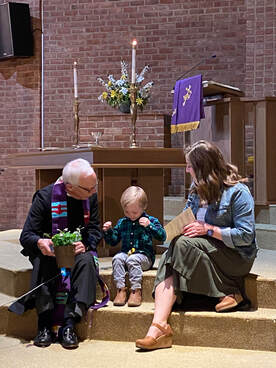 Sunday, March 17, 2022 was St. Patrick's Day. It was also Preschool Sunday at OPC, as is the third Sunday of every month. The Orange Presbyterian Weekday School invites its students and family to worship with them on that Sunday. Denny prepares a special children's message for the pupils. This Sunday it was about St. Patrick, the shamrock, and how even the simplest things can teach us about God's love. Come join us for this special event! The Orange Presbyterian Weekday School (OPWS) is hosting a craft market as a fundraiser. The event will be held in the Fellowship Hall (just follow the signs). Orange Presbyterian Church, 162 W. Main St., Orange VA Lots to see and do!
Get your child's Easter photo taken with live baby chicks by Katie Barfield Photography. And craft vendors! Each vendor has contributed one or more items for the raffle. Thanks to:
Enter the Fundraiser Raffle for some wonderful prizes! Tickets: $1 each; 6 for $5; 15 for $10 (your best value) Below is a preview of some of the raffle prizes! 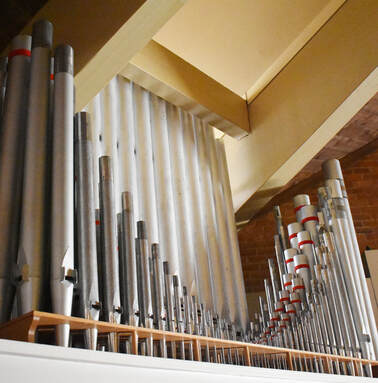 The restoration of OPC's organ has officially begun! This past week the trustees, authorized by the session, signed a contract with Sound/Organ Design. This Virginia Beach firm will be installing a new Viscount 363DK Classic Organ in the choir loft. Phase One This begins the first phase of the organ restoration project. This new electronic organ will replace the existing consol. The Viscount organ -- as installed -- won't use any of the pipes in the choir loft. Rather, it has it's own professional-grade speaker system that provides the sound. Sound/Organ Design will install a coupling system to the Viscount organ. This will allow us at some future date to tie in the old organ. But in the meantime, once the Viscount organ is installed, OPC will have a fully functional organ. And there's a good chance that the instrument will be in place before Advent! Phase Two The existing organ mechanism can be connected to the Viscount organ consol. But extensive restoration work must happen first. All 1,100 pipes need cleaning and retuning. All the wiring within the instrument -- some dating back to 1910 -- needs replacement. The mechanisms that open to provide air to the pipe are worn out. They all need replacement with simple electronic switches. A wind chest provides air to the pipes. This is from the original 1910 organ. It needs restoration to provide proper air pressure. When phase two is completed, OPC will have a magnificent instrument. The organist can chose to play either the electronic instrument or the acoustic pipe organ. They could also choose to play both together for a truly glorious sound. Project costs The cost for phase one from Sound/Organ Design is $99.522.00. They required a deposit of $28,856.00 to accompany the contract. $49.761.00 is due on delivery on the equipment to the church, and the balance, $19.905.00 due on completion. The organ fund as of this posting, has over $66.000. This covers the down payment an most of the second installment. The Finance Committee determined that we have several ways to cover the balance. A substantial amount is available from Memorial Gifts, as well as the Hazard Fund. Phase Two will cost a little more. Pebworth Technical Service has submitted an estimate of $135. 360.00. The restoration can be done in four parts. Each part would be paid for upon completion.  Part One, completely rewiring the old acoustic organ would cost $12,000,00. Part Two, restoring and retuning the pipes, would cost $16,000.00. Part Three, refurbishing the pipe chest would cost $60,390.00. Part Four, making the instrument playable, would cost $46,970.00. You can contribute to the fund by clicking on the Organ Fund graphic. It will take you directly to our online donation portal. Or send a check to OPC. Be sure to put "Organ Fund" in the check's memo field. - Ralph Graves Organ Committee 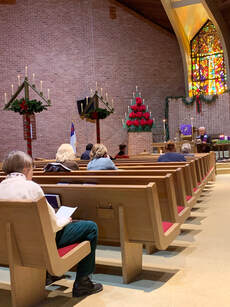 Orange Presbyterian Church has offered a Blue Christmas service for some time now. The concept is simple. For many people, Christmas isn't "the most wonderful time of the year." It can be a harsh reminder of lost loved ones and lost opportunities. The commercialized joyousness that seems to be everywhere can add to the sorrow of those in pain or mourning. The Blue Christmas service is one of quiet contemplation. It acknowledges those feelings and offers solace. Wednesday evening, December 20 turned out to be a very special service. 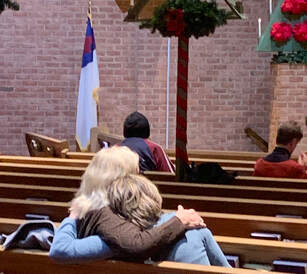 It marked the highest attendance for our Blue Christmas services. As always, most of the attendees came from outside the OPC church family. And something special happened in the sanctuary that evening. I would say most of us felt the healing presence of God that night. - Ralph Graves, OPC Communications Team (Denny's homily is available below. Click on the player to listen.) 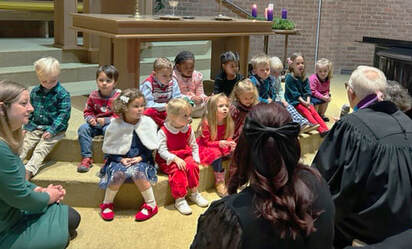 Sunday, December 17, 2023, was the Third Sunday of Advent. It was also Preschool Sunday. On the third Sunday of every month the Orange Presbyterian Weekday School staff, students, and their families attend this special service at OPC. The children sang some music of the season, then sat down for a word with Rev. Denny Burnette. With Christmas fast approaching, Denny knew what was on their minds. His simple message focused on the concept of gifts -- that they're expressions of love. And how God's own gift this season is a profound expression of his love for us. OPC still doesn't officially have a choir. But that didn't deter Music Facilitator Theresa Torian. She simply got together some talented singers and created one. The choir provided special music for the Third Sunday of Advent service.
It was a blend of both OPC members and non-members. All volunteering their time and talent to make worship more meaningful. And we appreciate their efforts! Special thanks to Cheryl Lewis, Caryn Block, Joanna Davies, Don Davies, Leo Mallek, Pat Nabers, Betsy Smith, Tracey Stakem, Charles Torian, and Fay Utz. And of course, their director, Theresa Torian. Below is a recording of the choir. (It's taken from the audio for the service, so sound quality isn't the best.) |
Archives
April 2024
Categories
All
|

